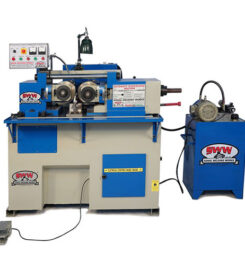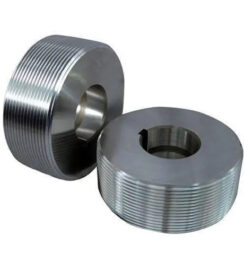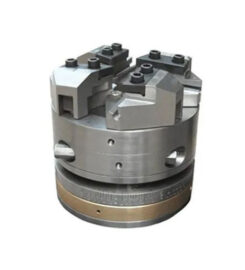
Sohal Welding Works
Sohal welding works is manufacturing various types of machines to provide solution of making thread for construction work i.e for scaffolding industry. The processes are as follow:
Thread Cutting ( Linco Machine )
Two Roll Hydraulic Thread Rolling Machine
Three Roll Hydraulic Thread Rolling Machine
Thread Rolls
FAQs
Thread Cutting ( Linco Machine )
Thread cutting, as compared to thread forming and rolling, is used when full thread depth is required, when the quantity is small, when the blank is not very accurate, when threading up to a shoulder is required, when threading a tapered thread, or when the material is brittle. Mainly this method is used to make thread in following applications TMT bars, Foundation bolts etc.
Linco machine is manufactured in Sohal Welding Works unit with high class of engineering design and workmanship with base structure made from Mildsteel, gearbox from cast iron fitted with taper roller bearings to bear pressure of threading during it's working and bed made from cast iron machined and hardened to ensure smooth working and accurate results.
Machine runs with pulley and belt drive by using electric motor of Cromphton or simens brand and die head is mounted to hold chasers with which one can vary the job diameters by using gauges provided with the machine.
Working: In this machine job is held in the jaws of vice which are hardened to ensure rigid grip of job with having different dimensions on each size to cope up with various sizes. Then job is moved forward towards the rotating die head and once threading is started job will move forward automatically until the moving slide stopper struck with die head opening handle.
Consumables: In this machine chasers, electric power and small amount of cutting oil is used as consumables.
Features: Low initial cost, easy to operate, Cuts and do threading in same setup, easy to change pitch of thread by changing chasers.
Two Roll Hydraulic Thread Rolling Machine
Thread forming and thread rolling are processes for forming, rather than cutting, screw threads, with the former referring to creating internal threads and the latter external threads. In both of these processes threads are formed into a blank by pressing a shaped tool, commonly called a 'thread rolling die' against the blank, in a process similar to knurling. These processes are used for large production runs because typical production rates are around one piece per second. Forming and rolling produce no swarf and less material is required because the blank size starts smaller than a blank required for cutting threads; there is typically a 15 to 20% material savings in the blank, by weight.
Materials are limited to ductile materials because the threads are cold formed. However, this increases the thread's yield strength, surface finish, hardness, wear resistance, and fatigue strength due to conformance of the grain with the thread profile. Also, materials with good deformation characteristics are necessary for rolling; these materials include softer (more ductile) metals and exclude brittle materials, such as cast iron. Tolerances are typically ±0.001 in. (±0.025 mm), but tolerances as tight as ±0.0006 in (±0.015 mm) are achievable. Surface finishes range from 6 to 32 micro-inches.





